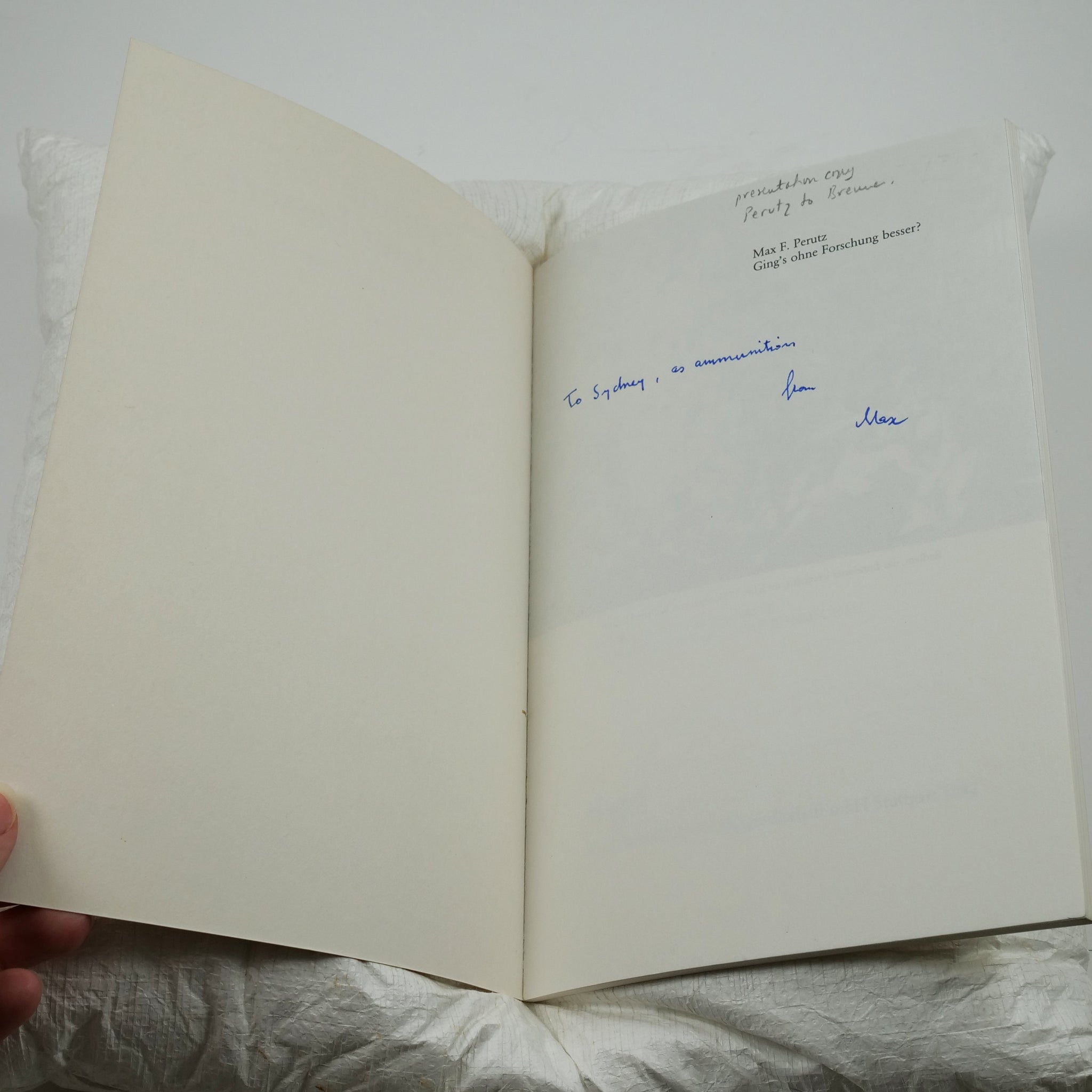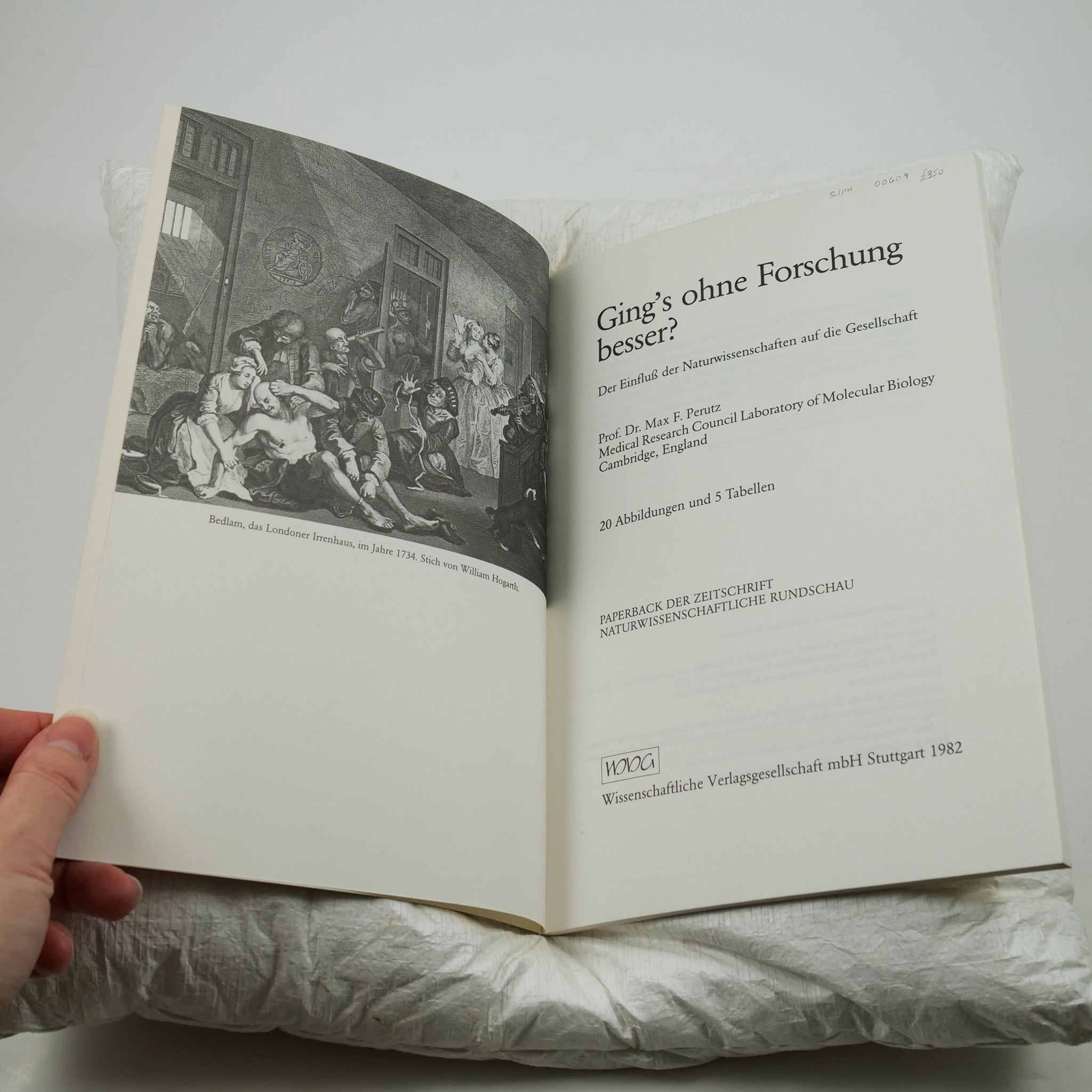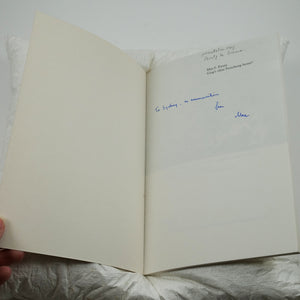(Brenner, Sydney) Perutz, Max F. | Ging's ohne Forschung Besser?
£350.00
-
First edition, first impression. Presentation copy inscribed by the author to his close friend and colleague, Nobel prize-winning biologist Sydney Brenner, on the half title, “To Sydney, as ammunition, from Max”. The present volume is a short discussion of the relationship between science and public policy, and it is unclear how the contents were intended as ammunition for Brenner. Works signed by Perutz are uncommon.
Author Max Perutz (1914-2002) was an eminent molecular biologist who founded a major Cambridge research institute, the Medical Research Council Laboratory of Molecular Biology, and who was awarded the Nobel Prize in chemistry in 1962 for his study of the structures of haemoglobin and myoglobin. It was at the Laboratory of Molecular Biology that the recipient, Sydney Brenner (1927-2019), spent the first twenty years of his career, and where he made major breakthroughs in genetics alongside Francis Crick.
Beginning in 1956, Brenner and Crick did groundbreaking research on how DNA is decoded by cells. Brenner proposed that the nucleotides which comprise DNA (adenine, guanine, thiamine and cytosine) are read by the cell in sets of three called codons, with each codon representing an amino acid (for example, three adenines in a row is the codon for the amino acid lysine). A gene is simply a string of codons that directs the production of a protein molecule from individual amino acids. He also correctly predicted the existence of messenger RNA, the molecule that carries the genetic code from the nucleus to the ribosomes, where the translation process occurs.
Following this work, it was Brenner’s efforts to establish a new laboratory organism for the study of genetics that led to his Nobel Prize. “Beginning in 1965, he began to lay the groundwork to make C. elegans, a small, transparent nematode, into a major model organism for genetics, neurobiology and developmental biology research. As a direct result of his original vision, this tiny worm became the first animal for which the complete cell lineage and entire neuronal wiring were known. Today, more than 1,000 investigators are studying C. elegans, and Brenner’s work was further honored when a closely related nematode was named Caenorhabditis brenneri” (Salk Institute biography).
-
...Der Einfluß der Naturwissenschaften auf die Gesellschaft. 20 Abbildungen und 5 Tabellen. Stuttgart: Wissenschaftliche Verlagsgesellschaft, 1982.
Perfect bound. Original glossy white wrappers printed in black and grey. Frontispiece, diagrams within the text. Wrappers partially yellowed, minor creasing affecting the lower half of the spine panel.








